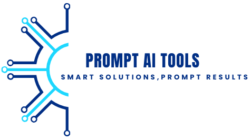Vibe Coding: The New Way of Programming in 2025
By: Prompt AI Tools | Published: August 2025
What is Vibe Coding?

Vibe Coding is an emerging programming approach where developers rely on AI copilots to generate, refine, and adapt code with minimal manual intervention. Instead of writing every line themselves, developers provide intent, guidance, and feedback—while the AI fills in the logic, syntax, and structure.
The term "vibe" refers to the intuitive, conversational style of working with AI. A programmer might say, “Build me a login page with OAuth support and responsive design,” and the AI produces working code in seconds. The developer then adjusts details, tests features, and iterates with the AI until the solution feels right. It’s like pair-programming with an infinitely patient assistant.
Why is Vibe Coding Different?
Traditional programming often demands strict knowledge of syntax, frameworks, and debugging. Vibe Coding shifts the emphasis from syntax to conceptual design. Developers can focus on what they want to build instead of how to type it out.
In this sense, Vibe Coding is closer to natural communication than engineering. It reduces barriers for beginners, accelerates professionals, and fosters more creativity in software design. Just as word processors transformed writing, vibe coding tools are transforming programming into a faster, more fluid process.
Key Features of Vibe Coding
- Conversational Input: Code generated from plain English or spoken prompts.
- Rapid Prototyping: Developers can create working prototypes in minutes.
- Iterative Refinement: AI suggests improvements, and users give feedback until the solution feels right.
- Framework Flexibility: AI can adapt to multiple languages and libraries instantly.
- Reduced Debugging Time: Common syntax and logic errors are auto-corrected by AI.
Benefits of Vibe Coding
Vibe Coding is changing the way software is created. Benefits include:
- For Students: Easier entry into programming without worrying about complex syntax.
- For Developers: Faster iteration cycles and reduced time spent on boilerplate code.
- For Businesses: Rapid app development means faster time-to-market and lower costs.
- For Innovators: More time can be spent experimenting and exploring ideas instead of writing repetitive code.
How Vibe Coding Works in Practice
The workflow of vibe coding typically looks like this:
- A developer gives a natural language instruction (e.g., “Create a REST API for a bookstore”).
- The AI generates the initial code in the preferred language or framework.
- The developer tests and provides feedback (e.g., “Add authentication” or “Use a NoSQL database”).
- The AI revises the code until it aligns with the desired outcome.
This back-and-forth exchange builds software collaboratively, where the human sets direction and the AI handles execution details.
Future of Vibe Coding

The future of vibe coding goes beyond text prompts. Soon, developers will be able to sketch interfaces, use voice commands, or even demonstrate workflows visually for AI to translate into working applications. As multimodal AI grows, vibe coding will become more immersive and intuitive.
Enterprises may embed vibe coding into project management systems, allowing non-technical team members to build functional prototypes. This democratization of programming could redefine how software projects start and scale.
Industry Use Cases of Vibe Coding
- Startups: Launch MVPs faster without large development teams.
- Education: Teach students problem-solving without overwhelming them with syntax.
- Healthcare: Quickly prototype patient apps and data dashboards.
- Finance: Automate workflow tools and compliance checks with minimal coding effort.
- Creative Industries: Designers and artists can experiment with interactive apps without needing deep programming expertise.
Conclusion
Vibe Coding represents a paradigm shift in software development. By blending natural communication with AI assistance, it enables faster, more creative, and more accessible programming for everyone—from students to seasoned developers. Instead of obsessing over syntax, we can focus on ideas, design, and innovation.
As AI copilots evolve, vibe coding may become the default way of writing software in the next decade. Whether you’re an aspiring coder, a startup founder, or an enterprise innovator, embracing this new style of programming will give you a significant advantage in the AI-driven future.
Try our top-rated AI tools today:



